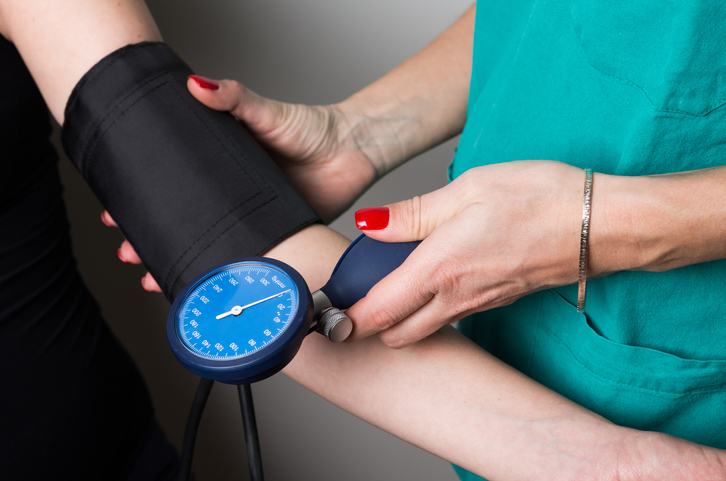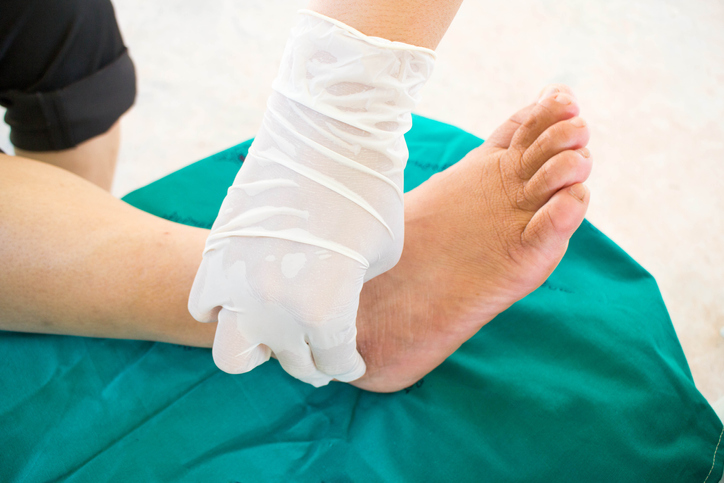While the latest round of snow and ice has many New Englanders revving up their…
Partners in Healing: Orthotic and Prosthetic Contributions to Diabetic Wound Care

The prevalence of diabetes is putting substantial patient populations at high risk for foot complications that require acute wound care. At Prosthetic & Orthotic Solutions, the increasing numbers we are seeing for wound care reflect the escalating statistics in our state and nationwide. As providers of durable medical equipment for prosthetics, orthotics, and supplies (DMEPOS), we partner with patients and their physicians and wound care specialists to assist with the healing process. From recovery to maintenance and prevention, orthotic and prosthetic support is an important part of long-term treatment plans.
An Epidemic
Statistics from the American Diabetes Association underscore the seriousness of the diabetes epidemic.[1] In 2015, 9.4%, or over 30 million Americans, were diabetic. Of equal concern are those that have diabetes but are unaware, along with those that are in the pre-diabetes stage. Roughly 7.2 million of those affected in 2015 were undiagnosed and another 84.1 million Americans over age 18 had pre-diabetes. Similar to national statistics, the association reports that in Massachusetts about 11%, or 645,000 people, have diabetes, with approximately 162,000 unaware they have the disease. Another 35% of the over-18 population in our state has pre-diabetes.
Wound Vulnerability
Nerve damage (neuropathy) and peripheral artery disease (PAD), common with diabetes, make patients susceptible to the development of ulcers, infections, and healing difficulties.[2]
 As explained by the American Diabetes Association, nerve damage inhibits the body’s ability to control oil and moisture, so the skin becomes dry and callused, likely to crack, and more vulnerable to infection. Nerve damage also reduces sensation, so patients are less likely to experience pain others typically feel at the earliest signs of a wound. Unless they are inspecting their feet regularly, diabetic patients may not notice a wound until it has advanced to a more dangerous condition. Healing is slowed by poor circulation to the extremities, and high glucose levels associated with diabetes make it harder for the body to fight infection. Due to these many factors, wounds often get stuck in the inflammation stage.[3]
As explained by the American Diabetes Association, nerve damage inhibits the body’s ability to control oil and moisture, so the skin becomes dry and callused, likely to crack, and more vulnerable to infection. Nerve damage also reduces sensation, so patients are less likely to experience pain others typically feel at the earliest signs of a wound. Unless they are inspecting their feet regularly, diabetic patients may not notice a wound until it has advanced to a more dangerous condition. Healing is slowed by poor circulation to the extremities, and high glucose levels associated with diabetes make it harder for the body to fight infection. Due to these many factors, wounds often get stuck in the inflammation stage.[3]
The American Podiatric Medical Association (APMA) states: “Diabetes is the leading cause of non-traumatic lower extremity amputations…and approximately 14-24% of patients with diabetes who develop a foot ulcer will require an amputation. Foot ulceration precedes 85% of diabetes-related amputations.”[4] We join the medical community in working hard to reduce these numbers through timely intervention, preventative measures, and professional collaboration.
Team Approach to Treatment and Prevention

In reviewing orthotic management of the neuropathic foot, authors Robinson, et al., report that “[n]europathic foot complications account for 20% of all inpatient days for patients with diabetes in the United States…”[5] These researchers stress the importance of a team approach so the disease is treated both systemically and at the resulting site of injury. Prosthetic & Orthotic Solutions fully supports this approach. While physicians help patients manage their diabetes, wound care specialists perform procedures to treat existing wounds, and our orthotic and prosthetic practitioners provide DME to protect and offload existing wounds, promote circulation, and help prevent future wounds from occurring.
As Amy Rosetta, CPO, LPO, writes, orthotic and prosthetic care has a positive impact on patient outcomes:
“The evaluation, offloading, and prevention methods established by orthotics and prosthetics have been proven enhancements to all wound care protocols. A multidisciplinary approach to wound care that includes orthotics has also improved outcome measures and decreased healing times for neuropathic patients while improving quality of life for this high-risk population.”[6]
DME for Wound Care
Durable medical equipment (DME) is equipment designed for long-term use in the treatment of medical conditions or illnesses. DME requires a prescription and, as outlined by Medicare, must meet specific criteria, including[7]:
- Durable (can withstand repeated use)
- Used for a medical reason
- Not usually useful to someone who isn’t sick or injured
- Used in your home
The DME many people are familiar with, like walkers, wheel chairs and commodes for the home, are obtained through other medical supply companies. The orthotic and prosthetic devices our practice specializes in fall under the umbrella of DME, but are usually not a “one and done” occurrence. The evaluation, fitting and design, patient education, follow-up, and adjustment processes involved in providing orthoses and prostheses often go beyond the scope of a single appointment. This is especially true for wound care, as patients may transition through a variety of devices as healing improves or new wounds surface.
At Prosthetic & Orthotic Solutions, the DME we offer for wound care includes both custom devices and off-the-shelf, medical-grade products in the following categories:
- Offloading boots and shoes allow wounds to heal by alleviating pressure and restricting movement that can otherwise aggravate and slow healing.
- Compression garments are prescribed for existing wounds with the goal of improving blood flow and reducing swelling.
- Diabetic shoes and inserts offer stability and pressure relief to allow wounds to continue healing and to prevent wounds from developing by offloading conditions such as pre-ulcerative calluses.
- Prostheses help patients regain mobility and independence when an amputation is required. Wound management and prevention begins after surgery and continues throughout the design and fitting of the device. Long-term care is necessary to maintain health of the residual limb and the unaffected side.
Patient and Caregiver Support
The success of orthotic and prosthetic interventions and collaborative care are highly dependent on the patient’s involvement and adherence to treatment plans. Abandonment of a device can cause drastic set backs in healing. One misstep or repeated pressure on a wound without a protective device can lead to further damage, longer healing times, and additional medical interventions.
To avoid these set backs and promote the best chances for success, Robinson, et al., stress:
“…a treatment that must not be overlooked is effective patient and caregiver education…The patient must have a clear understanding of the aims of their treatment, be able to identify worsening symptoms, and be proactive about communicating with their healthcare team to treat a new wound as expeditiously as possible. However, for this treatment to be successful, the patient must be informed and open to communication with their healthcare team.”5
Patients with chronic wounds are tasked with managing a range of appointments and processing instructions from multiple providers. As practitioners, it is essential that we are sensitive to this and provide patients – and their caregivers – with accessible, easy-to-follow instructions in an environment where they feel comfortable asking questions and reviewing self-care steps. At Prosthetic & Orthotic Solutions, our job does not stop with providing the most appropriate and functionally effective device. We aim to educate and empower patients so they feel confident adhering to treatment regimens, inspecting wounds and limbs regularly, and alerting us to concerns for prompt intervention.
To learn more about specific wound care solutions, visit the wound care section of our website or contact us directly with questions or to schedule an appointment at: 413-785-4047 (MA) or 860-904-2419 (CT).
[1] American Diabetes Association. Statistics about diabetes. diabetes.org/diabetes-basics/statistics/. Updated March 22, 2018. Accessed May 3, 2019.
[2] American Diabetes Association. Foot complications. diabetes.org/living-with-diabetes/complications/foot-complications/. Updated November 19, 2018. Accessed May 3, 2019.
[3] Gist S, Tio-Matos I, Falzgraf S, Cameron S, Beebe M. Wound care in the geriatric client. Clin Interv Aging. 2009; 4:269–287.
[4] American Podiatric Medical Association. Diabetic wound care. apma.org/Patients/FootHealth.cfm?ItemNumber=981. Accessed May 3, 2019.
[5] Robinson C, Major M, Kuffel C, Hines K, Cole P. Orthotic management of the neuropathic foot: An interdisciplinary care perspective. Prosthetics and Orthotics International. 2015; 39(1): 72-81.
[6] Rosetta A. Utilizing orthotic & prosthetic intervention in wound care. Today’s Wound Clinic. 2013. 7(5): 14-17.
[7] Medicare. Durable medical equipment (DME) coverage. www.medicare.gov/coverage/durable-medical-equipment-dme-coverage. Accessed May 3, 2019.



